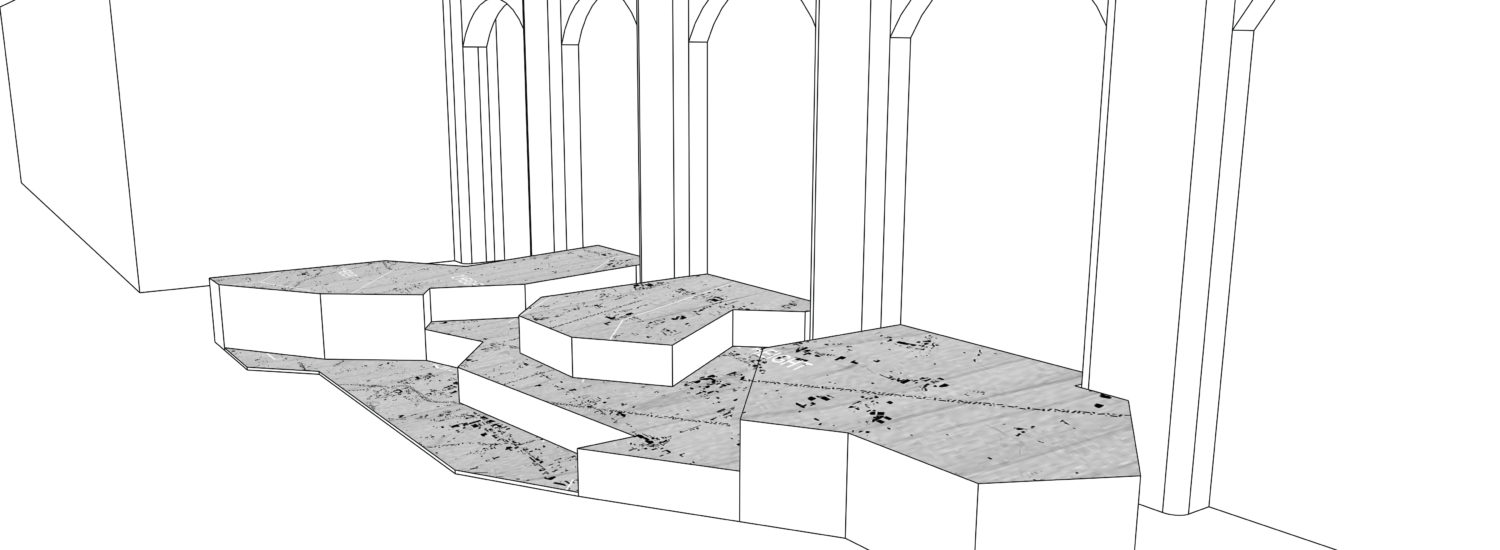Discussing the Marginal takes shape as a map of Toronto’s marginal spaces, an abstracted landscape, seating in an expanded hallway, and most of all, a space for examining marginal spaces in Toronto – from surface parking lots to spaces adjacent to highway, railway, and hydro corridors.
A series of diagrams examines unexpected scalar relationships between commonplace components of Toronto. These spaces elude conventional ideas about program and call into question stable concepts about a city. Various movements in Toronto including Laneway Project, DeRAIL, Undergardiner, and Greenline will intersect in the exhibition through a series of accompanying discussions. These, together with the rest of the exhibition, address the problem of how to frame and understand “the city” in the first place. Perhaps the city is not representable through form and images, but is instead a literary problem or the sound of multiple voices from the margins.
In the urban realm, millions of ways of living must negotiate in the same space. These are not just interpretations but, more urgently, they are desires, uses, and formations of publics. The increase in privatized spaces, along with stricter zoning and program, limit the power of genuine public use. Space as commodity, fixed zoning, and program dictate infrastructure as efficiency—each of these limit the language we have to discuss value, use, and movement respectively. In each case, a dominant language is assumed that flattens urbanity and reduces subjectivity to a single scale and sphere. However, the marginal is always a space of plurality that resists the imposition of a generalized and homogenous framework on life, and encourages the development of alternate forms of thinking, moving, relating, and living. Common languages emerge in which people exist at various public scales and modes of reality simultaneously.
Curated by:
Marcin Kedzior

